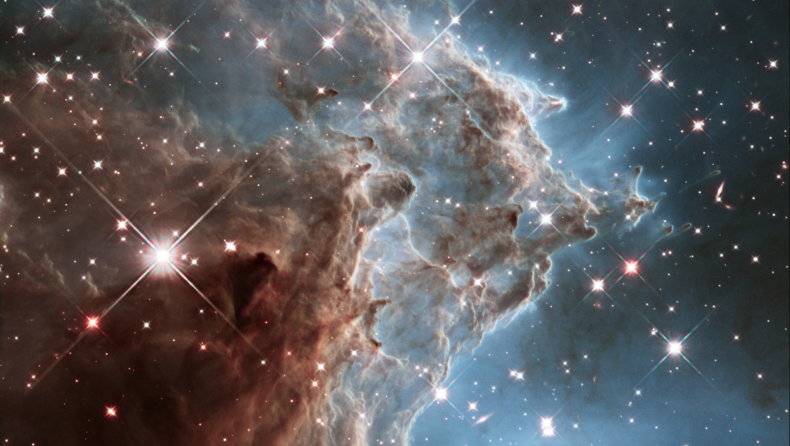ILMT is the cheapest and most reliable telescope which will help the astronomers in making new discoveries. It is world’s first liquid mirror telescope and it is in Devasthal Observatory in Nanital Uttarakhand. It requires around 50 litres of mercury to operate and can record a wider image, wider than a glass mirror telescope.
Figure 1. The Devasthal Observatory of ARIES at Nainital, Uttarakhand.

Highlights
- World’s First liquid mirror telescope to be used in astronomy.
- It is located in Devasthal Observatory of ARIES in Nanital, India.
- It uses mercury as reflective surface instead of glass mirror.
- It cost around $2 million.
- It gives wider field of view than a glass mirror telescope.
India is taking a big step in astronomy as they are setting up world’s first liquid mirror telescope for astronomers. It’s a unique telescope that focus light with a slowly spinning bowl of liquid in its centre instead of a solid mirror. Such telescope has been built before but this is the first large one purpose build for astronomy.
International Liquid Mirror Telescope (ILMT) is 4-meter wide. It resides in a high-altitude site at 2450 meter from sea level at Devasthal observatory in Uttarakhand.
Consortium From Belgium, Canada, Uzbekistan and India build this telescope. They spun a pool of mercury which is a reflective liquid, so that the surface curved into a parabolic shape which is ideal for focusing light. A protective layer of transparent film of mylar is placed to protect mercury from wind.
It is built with a budget of $2 million and it is significantly cheaper than any other telescope which typically uses glass mirror. The cost of typical glass mirror is around $18 million.
“Simple things are often the best”
Mercury is just one part of process as the reflected light passes through a multi-lens optical correctors that produces sharp image over a wide field of view. A large-format electronic camera located at the focus record the images.
Liquid mercury provides a low-cost alternative t glass mirror, which are very heavy and expensive trio produce. Around 2019 when they were building the telescope. They were short of mercury and can’t get any mercury because of Covid 19 and travelling to India was almost impossible. Around 50 litre of mercury is needed for the telescope, creating a parabolic layer of 3.5 millimetres thick.
In October 2022, full scale scientific operation will begin at ITML. It will be working with India’s largest operating Devasthal Optical telescope (DOT) and Devasthal Fast Optical telescope (DFOT) which are the two other present at Devasthal.
Figure 2. Top view of Telescope covered with a thin protective layer

Various Professors comment about ILMT
Prof. Paul Hickson an expert on Liquid mirror technology from University of British Columbia, Canada. He said that “the rotation of the earth causes the image to shift across the camera, but this motion is maintained electronically by the camera. This will increases observing efficiency and makes the telescope particularly sensitive to faint and diffuse objects.”
Prof. Dipankar Banerjee, Director of ARIES. He said “ILMT is the first liquid-mirror telescope designed especially for astronomical observation installed at the Devasthal Observatory.” He further added that Devasthal now has two 4-meter class telescope. He also said that this will also help in application of big data and Artificial intelligence/ Machine learning (AI/ML).
Dr. Kuntal Misra, Project Investigator of ILMT at ARIES. He said “the data generated with the help of ILMT survey will be exemplary. In the future, several young researchers will be working on different science program utilizing the ILMT data.” He told the reporters that the ILMT will produce about 10-15 Gigabits of data every day, which will be analysed to reveal variable and transient stellar sources.
Prof. Jean Surdej from University of liege, Belgium and University of Pozan, Poland. He noted “the data collected from ILMT will be suited to perform a deeper photometric and astrometric variability survey over a period of around 5 years.”
Read more:- The world’s first liquid telescope for astronomy is now in India. How does it differ?













